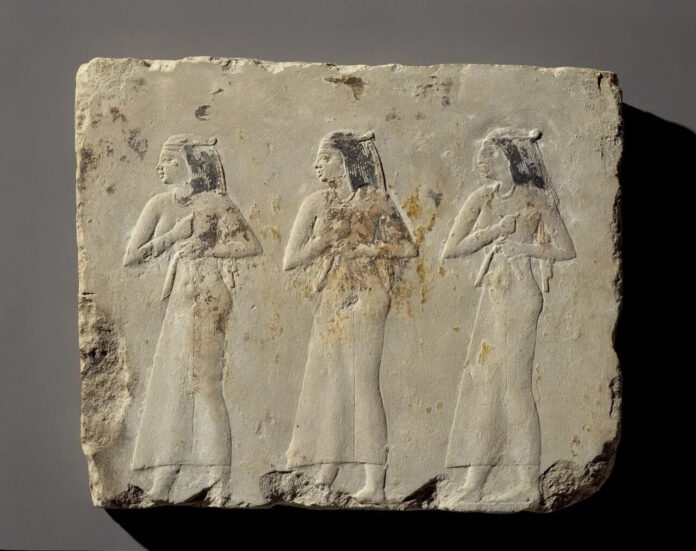A Fragment of Emotion in Limestone

The Relief of Mourning Women is a poignant fragment of limestone raised relief, showcasing three grieving women. Each figure faces left, gripping the flaps of their dresses in one hand while beating their breasts with the other, a powerful gesture of mourning. This artwork, which dates back to the Late Period of the 31st Dynasty (circa 381-343 BC), is currently housed in the Brooklyn Museum.
The Gesture of Mourning
These women represent mourners from a funeral procession, embodying a deep sense of grief. In ancient Egypt, such gestures were accompanied by loud cries, and the open mouth of the woman on the right captures this expression of sorrow. Their actions were not merely symbolic; they were a vital part of the mourning ritual, signifying the profound loss felt by the community.

A Colorful Tribute to the Deceased
Originally, this relief would have adorned a tomb chapel, its traces of paint indicating it was once vibrant and colorful. The surviving pigments are most concentrated on the upper and middle bodies of the figures, revealing hints of black in their hair and a possible decorative pattern on the dress of the woman to the left. These details suggest that the relief was intended to evoke both beauty and emotion in honor of the deceased.
Eternal Remembrance in Stone
In ancient Egyptian culture, images like this served a significant purpose. Carved in stone, they ensured that the deceased would be eternally mourned and never forgotten. The act of clutching or tearing at clothing, as depicted by these women, was a common expression of grief, prevalent in both ancient Egypt and other Near Eastern cultures.
A Fragment of a Larger Composition
This relief is just a fragment of a much larger composition that would have been situated in a tomb or funerary chapel, likely facing the mummy or a depiction of the deceased. The original piece may have included additional figures, enhancing the collective expression of mourning.
The Relief of Mourning Women stands as a testament to the enduring human experience of grief, offering us a glimpse into ancient rituals and the profound connections between the living and the deceased.

